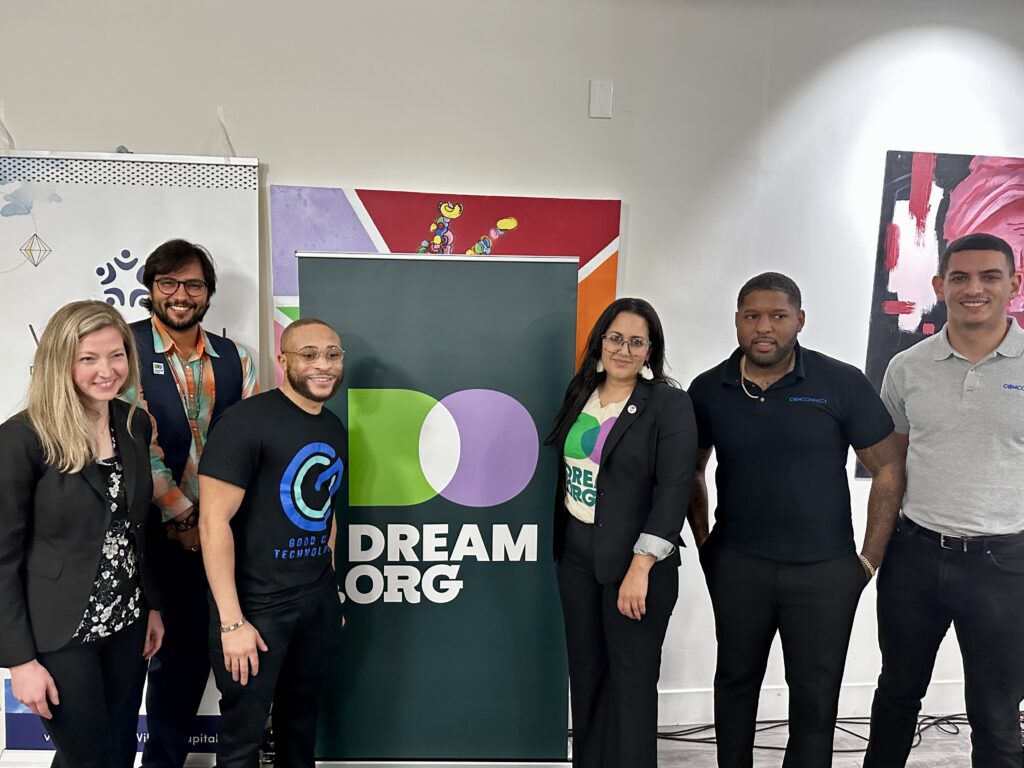Redefining Recidivism: A Holistic Approach to Reintegration
Authored by Allison Fabrizio
What if the way we’ve been measuring people’s success after prison for decades is wrong? Recidivism, a term widely recognized as the likelihood for individuals to return to criminal behavior, holds significant weight in discussions surrounding rehabilitation and reentry into society. At Dream.Org, we believe in the transformative power of education and opportunity.
This April for Second Chances Month, the White House declared its commitment to creating a system where “people returning to their communities from jail or prison have a fair shot at the American Dream.” To accomplish this, we must expand our definition of recidivism and reframe the conversation around reentry through the lens of rehabilitation and empowerment, creating a well-rounded definition of the term instead of focusing solely on rates of recidivism.
The current approach to assessing recidivism is wholly inadequate. It can be hard to even agree on what the word means; does it mean being sent back to prison, convicted of a crime, or arrested? Is the relevant period a year after prison, three years, or some other amount of time? The National Institute of Justice (NIJ) quantifies recidivism as “rearrest, reconviction or return to prison with or without a new sentence during a three-year period following the person's release.” This conventional definition, however, falls short of capturing the complex factors and nuances underlying criminal reoffense. While comprehending and monitoring arrest and conviction data is important, these metrics should not be the sole factors considered in determining whether someone has succeeded in the difficult process of returning home. After all, a person having a successful reentry experience could be arrested, while someone who has no contact with the legal system could still struggle with poverty, addiction, and other challenges.
Fortunately, advocates and scholars alike have recognized the deficiencies in the existing understanding of recidivism, paving the path for a more holistic understanding. In 2022, the National Academies of Sciences, Engineering, and Medicine, known for their expansive research and expertise, released a new report “The Limits of Recidivism” addressing the complexities of recidivism. This report, provides valuable insights into what other metrics can be used to enhance our understanding of success and ways to reduce recidivism. These measures, including employment, housing stability, access to healthcare, support networks, and personal well-being, are crucial as they offer a more holistic understanding of an individual’s experience within and beyond the criminal justice system.
Building upon this, the research organization RAND advocates for a fundamental shift in assessing the risk of recidivism using what they call the reset principle, which they describe as “Reset[ting] the assessment of recidivism risk to the time of the background check and not the time of conviction.” According to RAND's research, individuals, including those initially deemed high-risk for reoffending, show a significant reduction in the likelihood of reoffending over time without a conviction, ultimately transitioning to low-risk levels given an adequate period without new convictions. By enacting the reset principle we enhance equity and fairness, allowing individuals to reintegrate into society and secure employment opportunities, ensuring that individuals are not indefinitely penalized for past involvement in the criminal justice system.
Recognizing the limitations of conventional recidivism metrics will allow us to measure the value of research-backed reintegration efforts, such as wrap-around services. These programs, offering education and vocational training, financial literacy, mentorship, and policy advocacy, play an important role in reducing recidivism by providing support tailored to an individual's needs, underlying struggles (i.e. mental health and substance abuse), and socioeconomic challenges.

At Dream.Org, we strive to “leverage the power of emerging technologies and venture capital to disrupt this [prison] system” by investing in people who are often neglected in society. Through our Justice Innovation Prize, we were able to identify, promote, and support innovative approaches to dismantling the prison industrial complex, many of which utilize wrap-around services:
The Other Side Academy is a training school that empowers individuals through a 2.5-year program centering self-help and mutual assistance, where faculty members are not only mentors, but living examples of the programs’ success.
Nation Outside, a Michigan-based organization, has developed the Trauma Informed Peer Led Reentry, Workforce, Training/Certification & Mentoring (TIPLR) model to connect impacted individuals and drive policy change (such as the Clean Slate legislation).
Promising People offers self-paced trainings in high-demand fields, ranging from traditional trades (i.e. carpentry and plumbing) to technology and finance, helping individuals earn certifications and secure employment opportunities.
These are just a few of the initiatives collectively striving towards creating a supportive and inclusive society where individuals impacted by the criminal justice system can thrive and contribute to their communities.
Reimagining recidivism entails more than just reducing crime rates, it's about restoring dignity, fostering hope, and building pathways to second chances. Through our collective efforts at Dream.Org and beyond, we can be part of a societal change, where every individual has the opportunity to realize their full potential and pursue their dreams, regardless of prior involvement in the criminal justice system.
